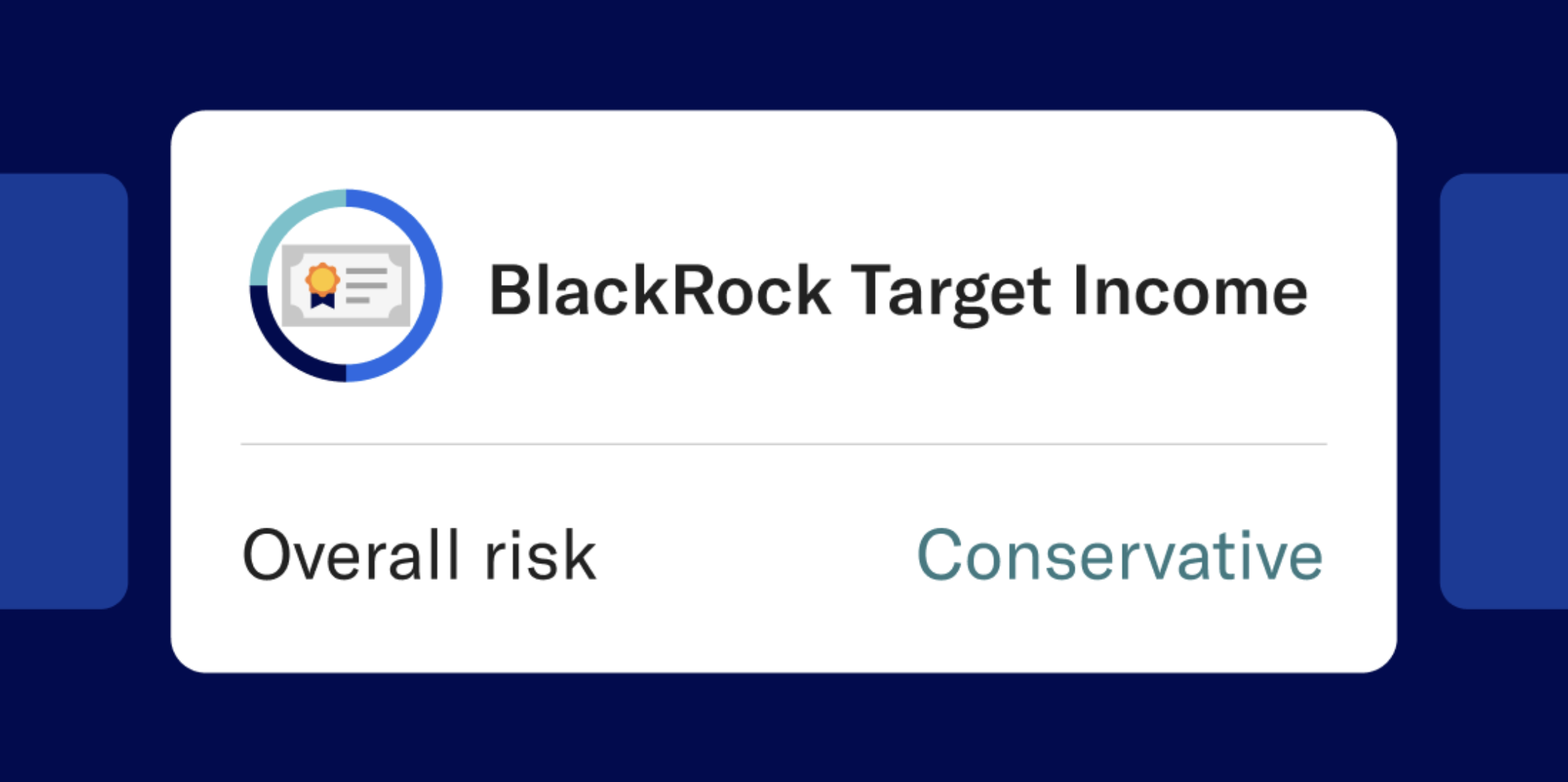
Here’s the TL;DR:
- Bonds are loans you give to companies or governments who pay you back with interest.
- Bonds generally earn more return than high-yield savings accounts while taking on less risk than stocks.
- Bonds can be bought through several sources, including a broker, the U.S. government, or a diversified ETF like the BlackRock Target Income portfolio offered by Betterment.
Congrats—you made it past the TL;DR. Next, we’ll dive deeper into how bonds may be able to bring balance to your investments, filling the gap between cash and stocks.
In just a few minutes you’ll walk away knowing:
- The basics of bonds
- The benefits of investing in bonds
- An easy way to buy bonds
As interest rates plateau—and eventually begin to drop—bonds may be a good way to earn extra yield in 2024.
The basics of bonds
No need to read a book about bonds—here are three Q&As that give you the basics.
Question 1: What is a bond?
Answer: A bond is basically a loan that you provide to an entity such as a business or government that wants to raise money. You can buy and hold a bond directly from the issuer (e.g. buying US Treasury bonds from TreasuryDirect) or choose to buy and sell bonds on the secondary market (e.g. an online broker).
Question 2: How does a bond work?
Answer: After you “loan” your money to the entity issuing the bond, they agree to:
- Pay back your principal: The issuer promises to pay your initial money back, aka your principal, by a specified date called the bond’s maturity.
- Pay you interest: You’ll receive periodic interest payments based on the annual interest rate paid on a bond, called the coupon rate. These interest payments are either distributed to you or reinvested into your investment on a consistent schedule.
Question 3: Are there risks to bond investing?
Answer: Generally, bonds are less risky than stocks, but that doesn’t mean they are without risk. Examples of these risks include:
- Credit risk: There’s a chance that a bond issuer won’t pay you back.
- Interest rate risk: There is a chance that the value of the bond will go down as interest rates go up. Long-term bonds have greater interest rate risk than short-term bonds.
Most bonds are rated based on the bond issuer’s financial strength and ability to pay a bond’s principal and interest.
Like stock investments, bonds with less risk offer less potential for return (aka lower yields). Less risky bonds include higher-quality bonds (more likely to be paid on time) or bonds with shorter maturities (length until full repayment).
The benefits of investing in bonds
For investors looking to put some of their cash to work but not wanting to go all-in on the stock market, here are three benefits that bonds can offer, making them complementary to cash and stock.
1) Bonds can help you avoid market volatility
Unlike stocks, bonds don’t represent a share of ownership in a company. Because of this, you won’t see the value of a bond increase as much as a stock when a company grows, but you generally also won’t see it decrease as much as a stock when a company struggles.
2) Bonds can help you preserve wealth
Bonds, especially short-maturity bonds, can be a good choice to help preserve your money while potentially earning more return than cash in a traditional savings account, money market account, or CD.
3) Bonds can help you generate income
Because the entity issuing a bond typically pays the bondholder interest on some regular schedule, they can help generate consistent income with less risk than stock investing.
An easy way to buy bonds
Most bonds don’t trade directly on centralized markets like stocks, making it more challenging to invest in individual bonds. You can buy individual bonds from a broker or directly from the US government, but both of those options require DIY knowledge and time to build a diversified portfolio.
An easy way to invest in a diversified portfolio of bonds is to invest in a bond ETF.
- A bond ETF, or exchange-traded fund, trades on stock exchanges, like a stock ETF.
- In one purchase, a bond ETF offers investors a way to gain exposure to a diversified portfolio of bonds, which can include government, municipal, corporate, and international bonds.
- Bond ETFs aim to provide regular income through interest payments from the underlying bonds and offer the flexibility of buying and selling shares on an exchange throughout the trading day.
The BlackRock Target Income portfolio offered by Betterment
The BlackRock Target Income portfolio offered by Betterment is an all-bond investing strategy that can generate up to 6.48% in yield with less risk than equity investing.
- The portfolio is designed to help you avoid market volatility, preserve wealth, and generate income, with all dividends automatically reinvested to grow over time.
- There are four options, each consisting of 100% bonds, targeting increasingly higher yields, and should be selected based on your risk tolerance.
- The portfolio is built by BlackRock, one of the world’s leading fund managers, offering some of the best options for balancing risk and return.
The BlackRock Target Income portfolio includes access to bond asset classes such as US High-Quality Bonds, US Short-Term Treasury Bonds, US Mortgage-Backed Bonds, High-Yield Bonds, Floating-Rate Bonds, and others.
We make it simple to invest funds into your BlackRock Target Income portfolio, with three options:
- Make a one-time deposit.
- Set up recurring deposits from Betterment Checking or an external account.
- Schedule recurring transfers from your Betterment Cash Reserve account.







